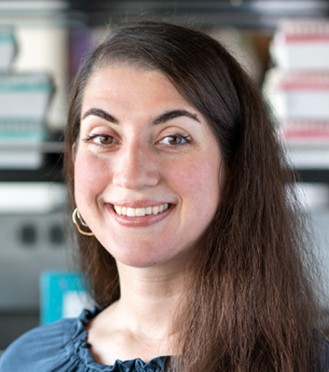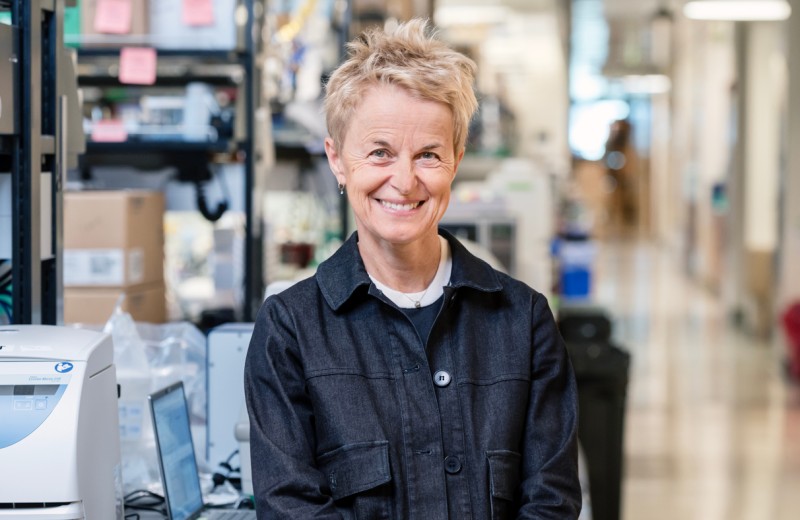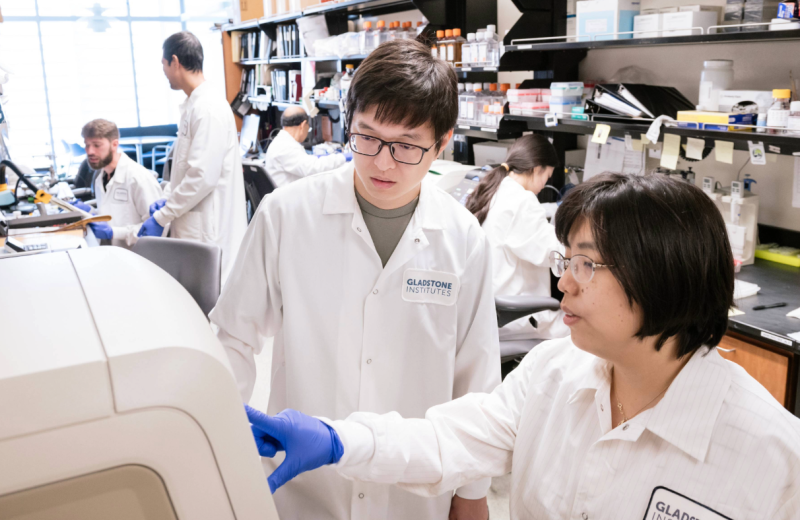Gladstone NOW: The Campaign Join Us on the Journey✕
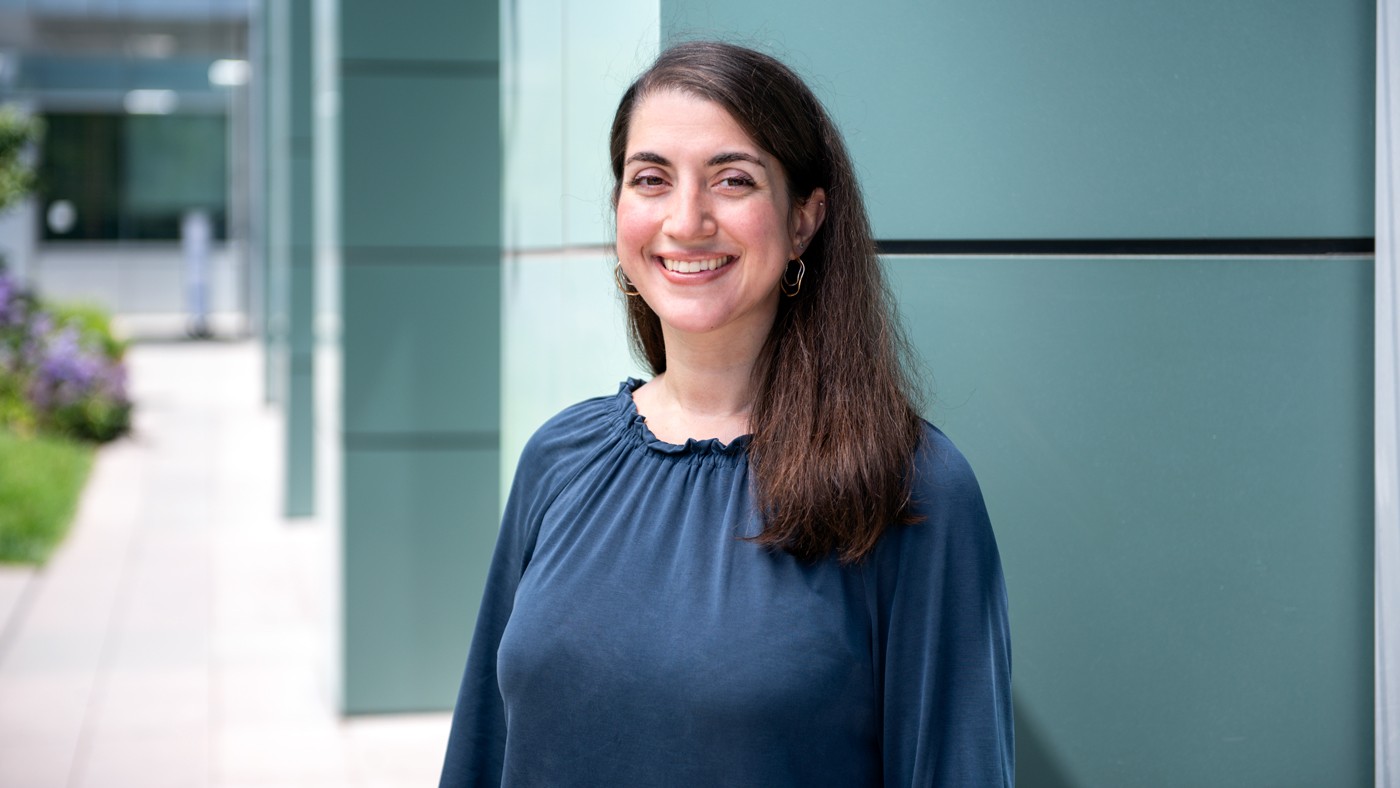
Christina Theodoris joins Gladstone as an assistant investigator to find new therapies for people with life-threatening cardiovascular diseases.
In order for our hearts to form correctly and keep us thriving, hundreds of genes must act together in complex networks. If part of a network malfunctions, cardiovascular disease may arise.
Christina Theodoris (she/her), MD, PhD, is focused on mapping how our genes interact within these networks to enable the proper development and function of the heart, and on understanding how the networks of genes are altered in cardiovascular disease—all with the goal of helping develop novel therapies.
“Through my research, I hope to develop new, network-correcting treatments that could really make an impact for my patients with heart conditions,” says Theodoris.
She is now joining Gladstone Institutes as an assistant investigator, where she will leverage both computational and experimental strategies to answer scientific questions.
Theodoris is no stranger to Gladstone. While completing her graduate studies at UC San Francisco (UCSF), she worked in the lab of Gladstone President Deepak Srivastava, MD, and led the discovery of a potential new medication for people with calcific aortic valve disease, a leading cause of heart disease.
Now, after 5 years as a resident in pediatric genetics at Boston Children’s Hospital, Theodoris has returned to San Francisco. In addition to her new role at Gladstone, she is also joining UCSF as an assistant professor in the Department of Pediatrics.
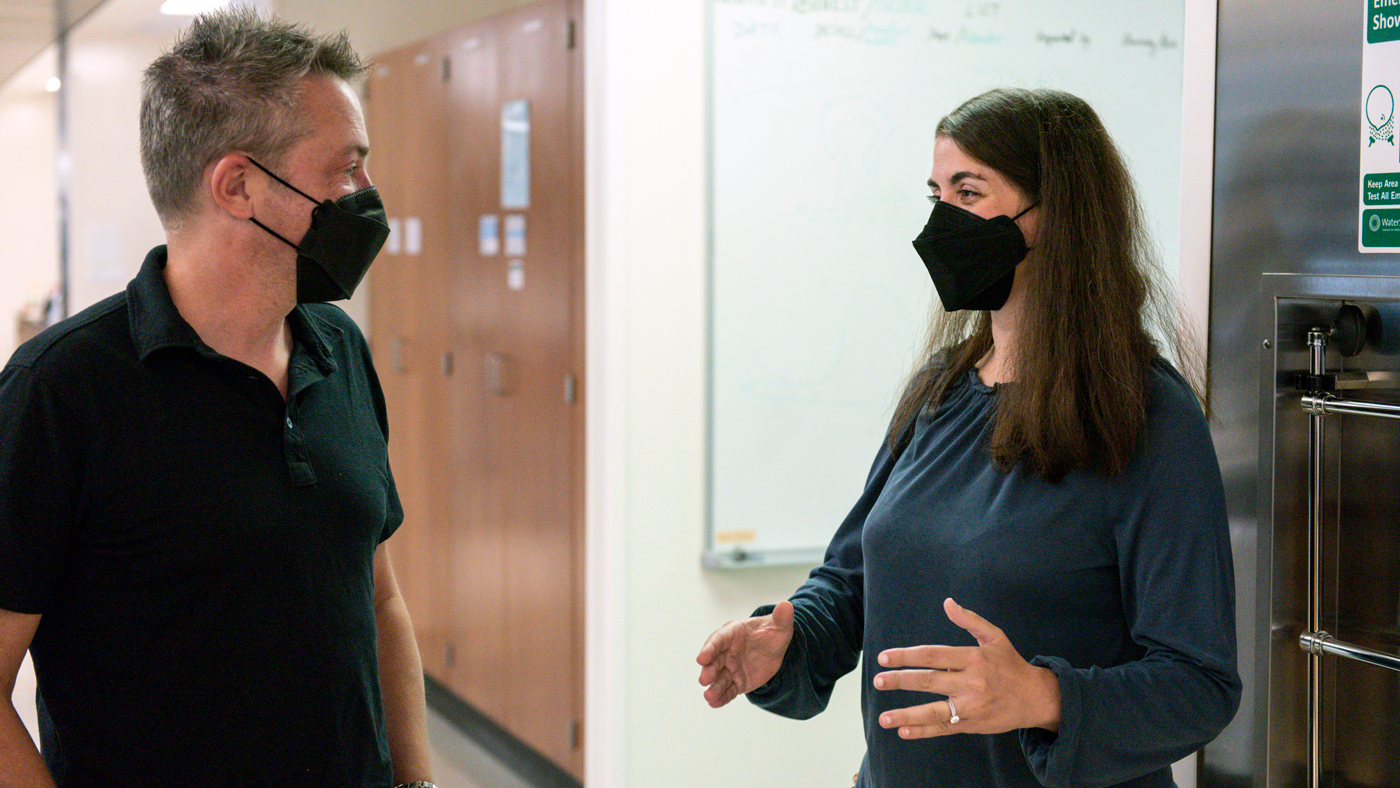
In her new lab, Christina Theodoris (right) will combine patient data and artificial intelligence methods to identify promising drug candidates for cardiovascular conditions. She is seen here in conversation with Benoit Bruneau (left).
“Christina embodies the best of that rare combination of someone who cares deeply for her patients while also working tirelessly in the lab to find new cures for them,” says Benoit Bruneau, PhD, director of the Gladstone Institute of Cardiovascular Disease. “She has already made important discoveries that have led to potential new drugs for cardiovascular disease, and we look forward to her expanding on those here at Gladstone.”
Seeking Network-Correcting Drugs
Drugs that treat disease by targeting individual dysfunctional genes already exist for many illnesses, especially different types of cancer. However, traditional methods for designing treatments don’t take into account the complex ways in which genes interact in networks, and therefore might not identify the most effective drugs.
“You might find a drug that has some beneficial effect on disease symptoms, but if it’s targeting genes that happen to be on the periphery of a malfunctioning network instead of what’s really central within that network, it won’t affect the core of the disease process,” says Theodoris.
Drugs that target central network components and correct their function could have a far broader and more restorative effect.
Theodoris and her colleagues demonstrated this concept in her previous work on calcific aortic valve disease at Gladstone. First, they used large amounts of patients’ genomic data to build a highly detailed computational map of the network of genes involved in the disease. Then, they applied an artificial intelligence method to screen for promising drug candidates based on how well each drug was able to correct problems within the gene network in diseased human cells in the lab.
This union of computation and experimentation surfaced a promising drug candidate that successfully prevented calcific aortic valve disease in mice. Soon, that drug or a closely related analog may be provided to patients in a clinical trial.
“Clinical work is key for directing my research questions to areas that are likely to have the most impact for my patients. And it helps me see how we can best translate our discoveries and integrate them into clinical care.”
“Now, we want to use a similar network-based screening method to identify drug candidates for many other cardiovascular conditions,” Theodoris says.
Her team is starting with aortic aneurysm, a rare but life-threatening condition in which the aorta gradually dilates and may eventually rupture. Current treatments are limited; if dilation is detected, doctors may monitor the patient until the disease is severe enough that a risky aortic replacement surgery is warranted.
“We hope to find a targeted therapy that treats the underlying disease process to prevent aortic dilation,” Theodoris says.
However, very little human gene expression data exist for aortic aneurysm, posing a major challenge for mapping the underlying gene network. So, the team is applying a computational strategy called transfer learning, in which a computational model is trained on a very large amount of general data to gain baseline knowledge that can then be transferred to improve predictions in a narrower topic with limited data—in this case, aortic aneurysm.
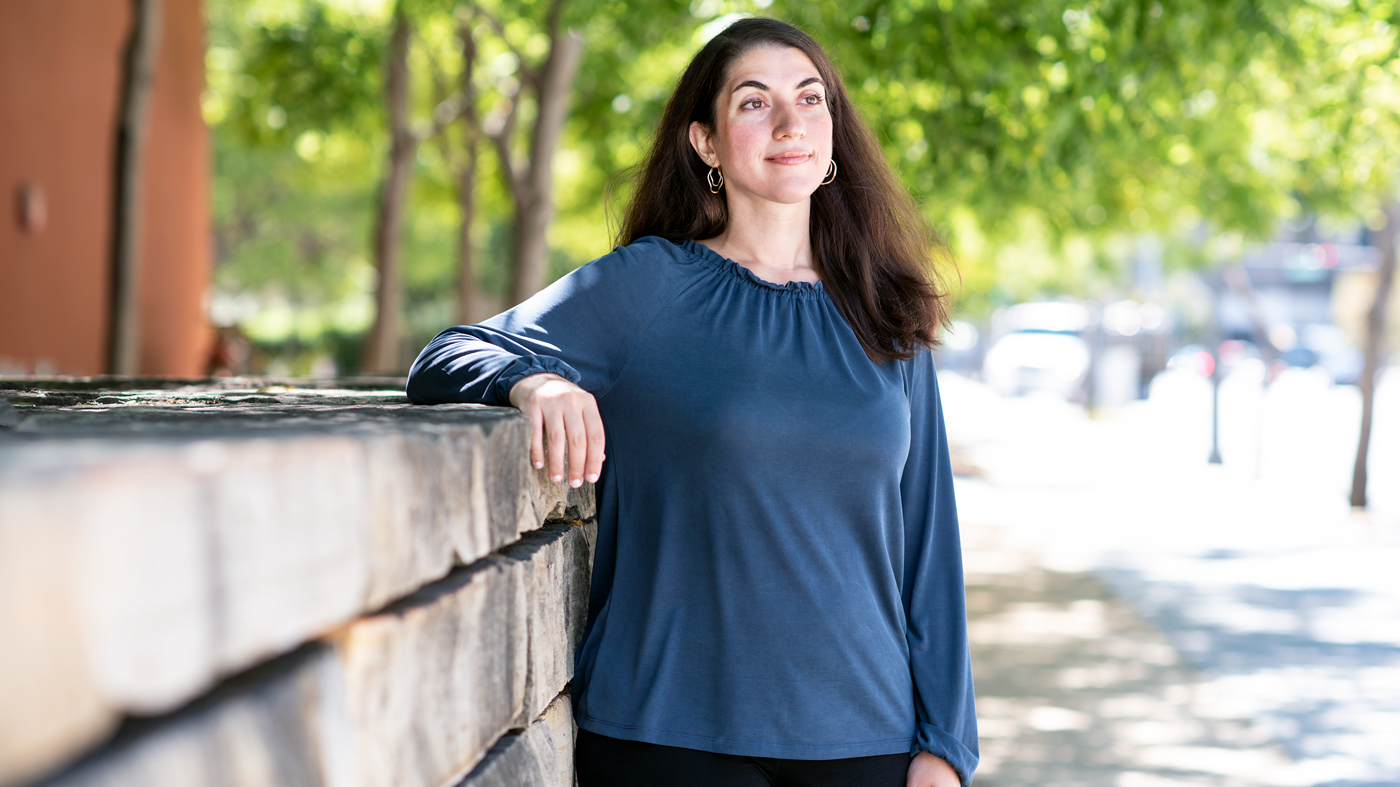
It was during her undergraduate studies that Theodoris developed an appreciation for the architecture of the gene networks involved in early development—and recognized the potential of applying them to disease.
“We trained a new model using publicly available single-cell RNA sequencing data from a total of 30 million cells from a variety of human tissues to get a baseline understanding of gene network dynamics,” Theodoris says. “Now, we can fine tune it with the limited amount of aortic aneurysm data we have in order to map the underlying gene network and identify what is really important in driving the disease.”
Once the team has mapped the aortic aneurysm gene network, they will apply the same network-based screening strategy used for calcific aortic valve disease in order to find promising drug candidates that can then be tested in mice and, hopefully, one day be used to help treat aortic aneurysm in patients.
“During the screening process, it will be important to use cells from different stages of the disease so we can see how the network dynamics change as the disease progresses,” Theodoris says. “It’s possible that a medication that’s effective at an earlier stage might not work once the disease has progressed beyond a certain point, while a different medication may be effective in this later stage.”
In the future, her lab will apply a similar method to discover new drugs for other serious cardiovascular conditions that currently lack effective treatments, including cardiomyopathies and vasculopathies.
Driven by a Commitment to Patients
Theodoris has long been passionate about discovery. Growing up, she and her sister spent much of their time playing in the forest near their home in Atlanta, Georgia.
“We were fascinated by all the life around us, and I began to be curious about the underlying biology of it all,” recalls Theodoris.
As an undergraduate at the California Institute of Technology, she worked in the lab of biologist Eric H. Davidson, PhD, where she developed a deep appreciation for the architecture of the gene networks involved in early development—and recognized the potential of applying them to disease.
Now, inspired by her time in Srivastava’s lab and at Boston Children’s Hospital, Theodoris’s top motivator is her patients, and she will continue to work in the clinic at UCSF while running her lab at Gladstone.
“My biggest driver is the hope that we can one day make an impact in the lives of patients and their families.”
“Clinical work is key for directing my research questions to areas that are likely to have the most impact for my patients,” she says. “And it helps me see how we can best translate our discoveries and integrate them into clinical care.”
As she builds her team at Gladstone, Theodoris is focused on optimizing the combination of computational and experimental strategies that underpin her research. She is hiring scientists with expertise in both areas and aims to foster clear, productive communication to maximize opportunities for discovery.
“Overall, for many cardiovascular conditions, there are no targeted medical treatments available to our patients,” Theodoris says. “My biggest driver is the hope that we can one day make an impact in the lives of patients and their families by targeting their individual genetic changes and treating the core of the disease process. That would be truly incredible.”
For Media
Julie Langelier
Associate Director, Communications
415.734.5000
Email
About Gladstone Institutes
Gladstone Institutes is an independent, nonprofit life science research organization that uses visionary science and technology to overcome disease. Established in 1979, it is located in the epicenter of biomedical and technological innovation, in the Mission Bay neighborhood of San Francisco. Gladstone has created a research model that disrupts how science is done, funds big ideas, and attracts the brightest minds.
About Christina Theodoris
Christina Theodoris, MD, PhD, is an assistant investigator at Gladstone Institutes, and an assistant professor in the Department of Pediatrics at UC San Francisco (UCSF). She completed her bachelor’s degree in biology at California Institute of Technology, where she worked in the Eric Davidson Lab studying gene regulatory networks in early sea urchin development. She then completed her MD and PhD in developmental and stem cell biology at UCSF. During her graduate work in Deepak Srivastava’s lab at Gladstone, co-mentored by Katherine Pollard and Benoit Bruneau, she developed an innovative network-based approach to therapeutic design leveraging machine learning and iPS cell disease modeling, which ultimately identified a candidate molecule for the treatment and prevention of cardiac valve disease currently under further development toward clinical trials.
As a postdoctoral fellow in the Department of Data Science at Dana-Farber Cancer Institute and the Broad Institute of MIT and Harvard, co-mentored by X. Shirley Liu and Patrick Ellinor, she developed a novel deep learning model leveraging large-scale single cell transcriptomic data to enable context-specific predictions in settings with limited data in network biology through transfer learning. She also co-developed a machine learning methodology that systematically contrasts single-cell multimodal transcriptomic and chromatin accessibility data to infer the regulatory circuitry driving fate decisions within cell state trajectories. She completed her medical subspecialty training in pediatrics and medical genetics at Boston Children’s Hospital, and her clinical experiences in pediatric cardiovascular genetics inform and direct her research program.
Featured Experts
Want to Join the Team?
Our people are our most important asset. We offer a wide array of career opportunities both in our administrative offices and in our labs.
Explore CareersBeyond Viruses: Expanding the Fight Against Infectious Diseases
Beyond Viruses: Expanding the Fight Against Infectious Diseases
The newly renamed Gladstone Infectious Disease Institute broadens its mission to address global health threats ranging from antibiotic resistance to infections that cause chronic diseases.
Institutional News News Release Cancer COVID-19 Hepatitis C HIV/AIDS Zika Virus Infectious DiseaseFueling Discovery at the Frontiers of Neuroscience: The NOMIS-Gladstone Fellowship Program
Fueling Discovery at the Frontiers of Neuroscience: The NOMIS-Gladstone Fellowship Program
The NOMIS-Gladstone Fellowship Program empowers early-career scientists to push the boundaries of neuroscience and unlock the brain’s deepest mysteries.
Institutional News Neurological Disease Mucke Lab NOMISGladstone Mourns the Loss of Founding Trustee Richard D. Jones
Gladstone Mourns the Loss of Founding Trustee Richard D. Jones
Jones lent Gladstone his time and expertise for nearly 50 years.
History Institutional News

